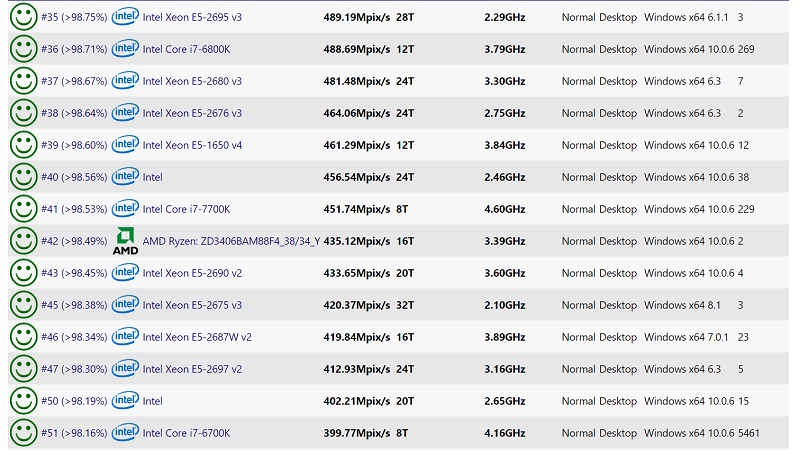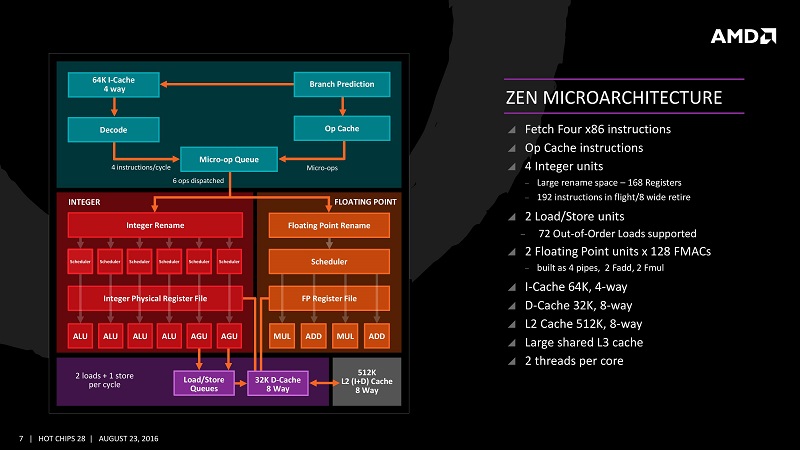AMD Ryzen R7 1700X SiSoft Benchmark Leaked
Samuel Wan / 8 years ago

Within the next 3 week, AMD is set to launch their new Ryzen processors. Based on their new Zen architecture, AMD has claimed a 40%+ IPC improvement compared to their current lineup. So far, various leaked benchmarks have largely support AMD’s claim. Today, we have a new benchmark that shows off some of the strengths and weaknesses of Zen, the SiSoftware CPU Multi-Media Benchmark.
First up, the R7 1700X which is the ZD3406BAM88F4_38/34_Y score 435Mpix/s, giving it an overall ranking of 2513. This 8 core 16 thread chip clocked at 3.4 GHz+ manages to eek in just about where the quad-core Intel i7 7700K sits and below the hexacore i7 6800K. From a quick look, it looks like things might be bad for AMD if their octa core only manages to match Intel’s quad-core. Fortunately for AMD, there is more to the story than that.

The SiSoftware test runs a variety of integer and floating point tests to give this overall score. Various instructions like the old school x86, MMX, SSE, SSE2, SSSE3, AVX and AVX 2 are all used. When you consider the differences in core design, we can unpack Intel’s lead. In terms of integer performance, both Skylake and Zen feature 4 ALU (Arithmetic Logic Unit) which hopefully perform about the same. However, once we consider floating point performance, AMD only has 2x 128bit FPU (Floating Point Unit) while Intel has 2x 256bit FPU, meaning Intel still has double the floating point performance compared to Zen.

We also consider the fact that this is a synthetic benchmark meant to fully utilize the CPU core get performance as close to the theoretical design limits. Real world performance might not scale as well except for some specific workloads. There is also the fact that Intel’s FPUs are only fully utilized when AVX instructions are in play meaning legacy programs won’t see such a big difference between Zen and Skylake. The i7 7700K also sports a hefty clock speed advantage as well, coming in over 1 GHz faster. Once all that is taken into account, Intel’s lead makes more sense.
At the same time, Zen already has doubled the FPU count compared to Bulldozer. Even though AMD has a chance to stuff even more FPUs, they chose not to. Perhaps they are still banking on the iGPU and APU to lend its hand to floating point performance under HSA? Maybe this will be once area AMD will improve on with later generations of Zen or with Zen+. It will be interesting to test out the limits of Zen once we finally get our hands on it.



















